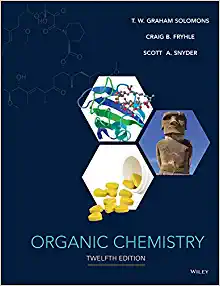An alkane (A) with the formula C 6 H 14 reacts with chlorine to yield three compounds
Question:
An alkane (A) with the formula C6H14 reacts with chlorine to yield three compounds with the formula C6H13Cl: B, C, and D. Of these only C and D undergo dehydrohalogenation with sodium ethoxide in ethanol to produce an alkene. Moreover, C and D yield the same alkene E (C6H12). Hydrogenation of E produces A. Treating E with HCl produces a compound (F) that is an isomer of B, C, and D. Treating F with magnesium in dry ether followed by aqueous acid gives a compound (G) that is isomeric with A. Propose structures for A–G.
Fantastic news! We've Found the answer you've been seeking!
Step by Step Answer:
Related Book For 

Organic Chemistry
ISBN: 978-1118875766
12th Edition
Authors: T. W. Graham Solomons, Craig B. Fryhle, Scott A. Snyder
Question Posted:





